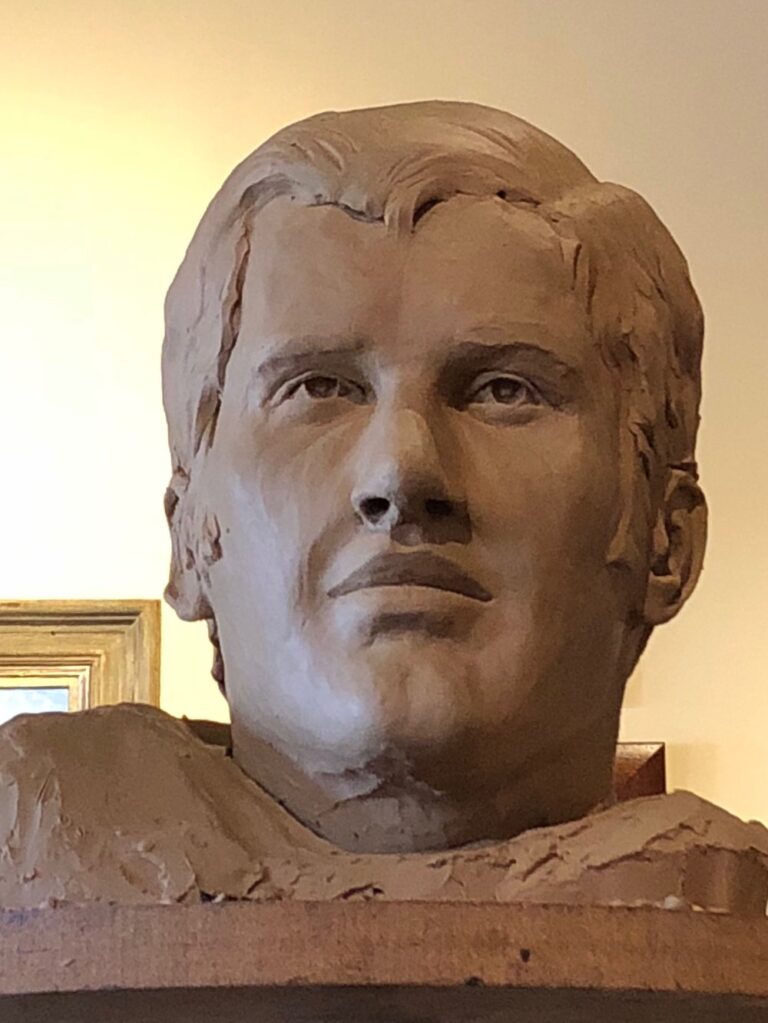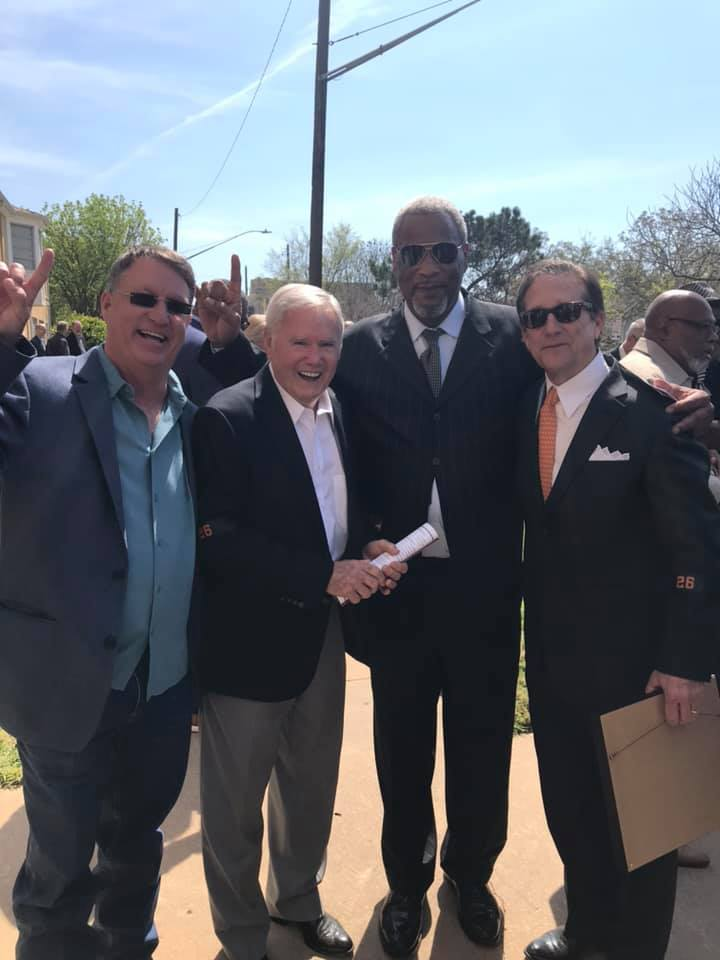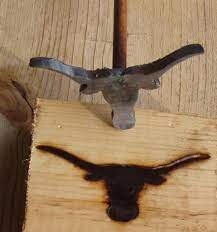3-29-2024 TLSN volume VIII newsletter #7
|
IMPORTANT: Please click on the white letters shown above titled “VIEW IN BROWSER” to enlarge and enhance the photos and text on your cellphone. If you don’t, the text and photos will be very small and difficult to read.
|
Jackie Campbell-Quispe played volleyball for Texas in the mid-1980s
|
|
|
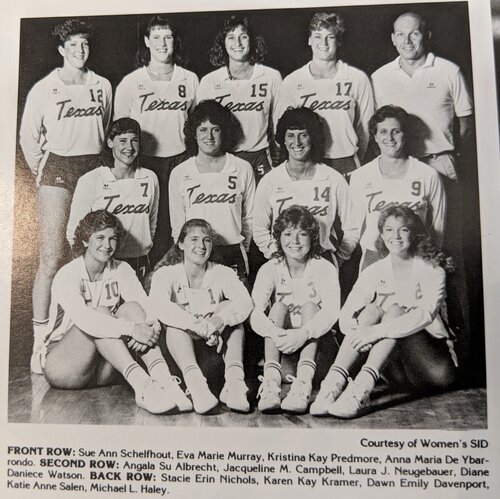
|
|
#5 is Jackie Campbell – second row, second from the left.
|
|
|
|
This photo was taken on Thanksgiving 2017. Yanaq is the one sitting on the fence in a blue soccer jersey.
|
|
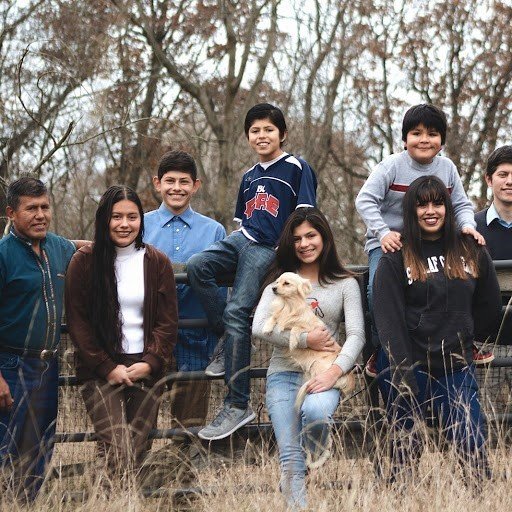
|
|
|
The TLSN Board of Directors has completed its due diligence and authorized a grant of up to $10,000 to help former Longhorn volleyball player Jackie Campbell’s son Yanaq.
Yanaq has a very rare type of extramedullary leukemia relapse not involving more traditional sites of his bone marrow, CNS space, or testes.
Yanaq is one of the first patients in the United States with relapsed Ph-like acute lymphoblastic leukemia that has received the newest and most aggressive therapy, including engineered CD19 CAR-T cells followed by complete remission for two years.
Glenn Blackwood, a Longhorn Hall of Honor inductee and two-time Miami Dolphin Super Bowler, has donated $5,000 to TLSN’s general fund. The funds will be used to support Jackie.
Previously, Glenn worked with TLSN to assist the family of Jackie Campbell-Quispe, and this donation is an extension of his support. TLSN will match Glenn’s donation with a grant of up to $5000.
Glenn states:
“It is a privilege to help someone in Longhorn athletics who isn’t just tied to the football program. Football is a marquee sport at UT, but the work and effort put in by those in other sports are no less admirable.
When a need arises from someone in our Longhorn family, the opportunity to help with those needs through the TSLN mission is a call that is hard to ignore.”
|
Beth Coblentz, the Chairwoman of TLSN, states that Jackie is reaching out to charitable organizations specializing in various forms of support for families in life-or-death situations. TLSN aims to ensure that Jackie’s family has access to a financial safety net while she navigates the application process.
Beth says that as of this writing, dated 3/28/2024,
“The oncology office in Michigan is working with the MD Anderson office and with insurance. There is no guarantee that the response will be positive.
|
There is a Longhorn huddle for Jackie and Yanaq
|
|
|

|
No TLSN Board Member receives compensation from donations received.
TLSN is a 501 (c) (3). Donations are needed so TLSN can continue offering grants and chronicling the History of Longhorn sports as seen through the eyes of those who created the Longhorn brand.
The donation link is
|
|
|
|
Fifty-Year Flashback:
Rosey’s Knee And What Might Have Been
In 1974, Veteran players dominated Darrell Royal’s team. Leaks would be churning and burning behind a talented band of linemen, including Bob Simmons, Bruce Hebert, and Bob Tresch, among others. Wishbone quarterbacking was in the good hands of Marty Akins and Mike Presley, and the defense would be headed by rugged tackle Doug English and LB Wade Johnston, the Cotton Bowl’s defensive MVP.
But the ’74 Longhorns’ dreams and hopes got wrecked one fine spring day. Former UT center Bob Tresch looked back a half-century this week and recalled that Leaks had broken through the line and taken a hit low and from the side by DB Sammie Mason. “Nobody wanted to tackle Rosey head-on if they could avoid it,” Tresch said.
Leaks was hurt. Hurt badly. Surgery would be a necessity.
Suddenly, a season – five months away — was in the balance.
“It was a devastating blow to the team once we learned the severity of the injury,” Tresch remembered.
For the rest of Larry’s article, click on https://texas-lsn.squarespace.com/rosey-leaks
|
Above photo is Professor Larry Carlson
|
|
|
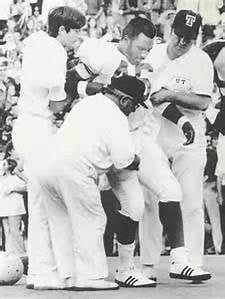
|
“Had (the injury) not happened,” Billy Schott opines, “I think there would be a third name on that (Campbell-Williams) Field.”
|
|
|
The guy who wore number 46, the guy who had grown up helping his parents grow cotton and corn near Chappell Hill, who had led the Brenham Cubs to a state baseball title while starring in football, was on a first-name basis with work. Hard work.
|
|

|
|
|
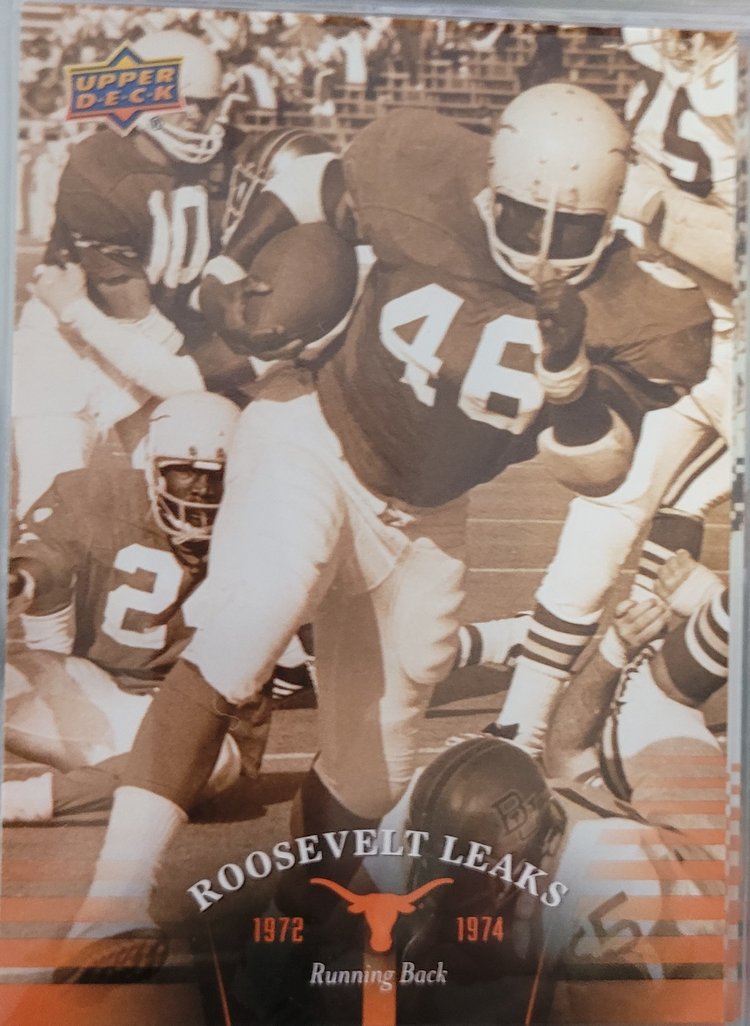
|
Reminiscing about the fateful spring fifty years ago, Tresch said the injury would cost the team leadership and superlative talent.
“Everyone looked up to Rosey, and it wouldn’t be the same without him.”
|
|
|
Then Tresch opened up a whole ‘nother can of “I wish” worms.
“We can only wonder what a backfield with a healthy Roosevelt Leaks and Earl Campbell would have been like,” he wrote, then apparently took a deep breath. “I’m finally over it.”
|
|
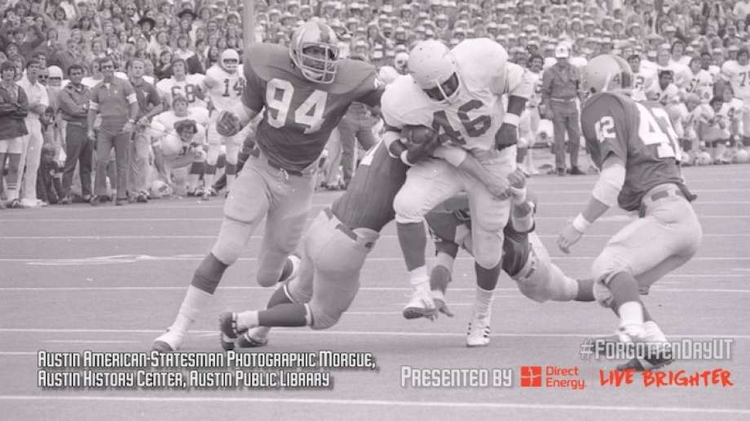
|
|
|
|
|
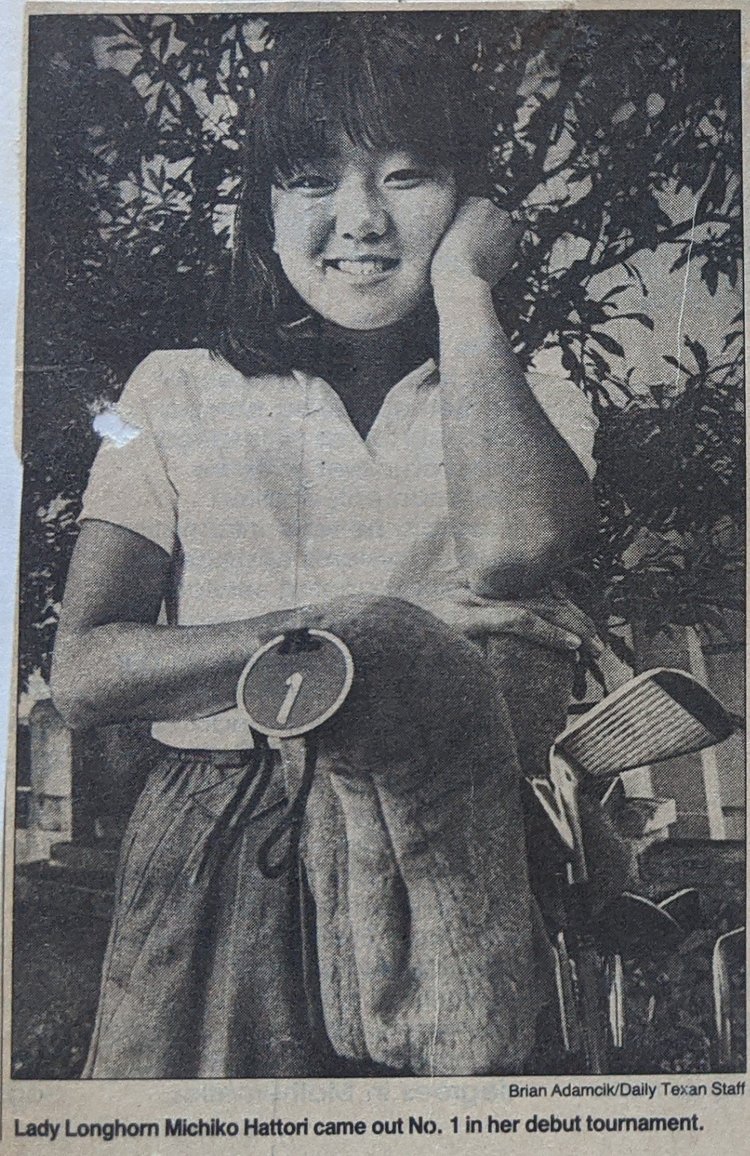
|
|
Coach Weis said that Michiko was ” one of her best athletes at managing her game.”
Michiko Hattori finished 2nd in the NCAA National Championship medalist competition and won the Honda Broderick Award for National Collegiate Golfer of the Year. In 1989, she received the Eleanor Dudley Award.
Machiko holds the Texas record for the most times as an All-American (4). She was also named SWC Athlete of the Decade for golf ( 1982-1992).
|
|
|
|
|
|
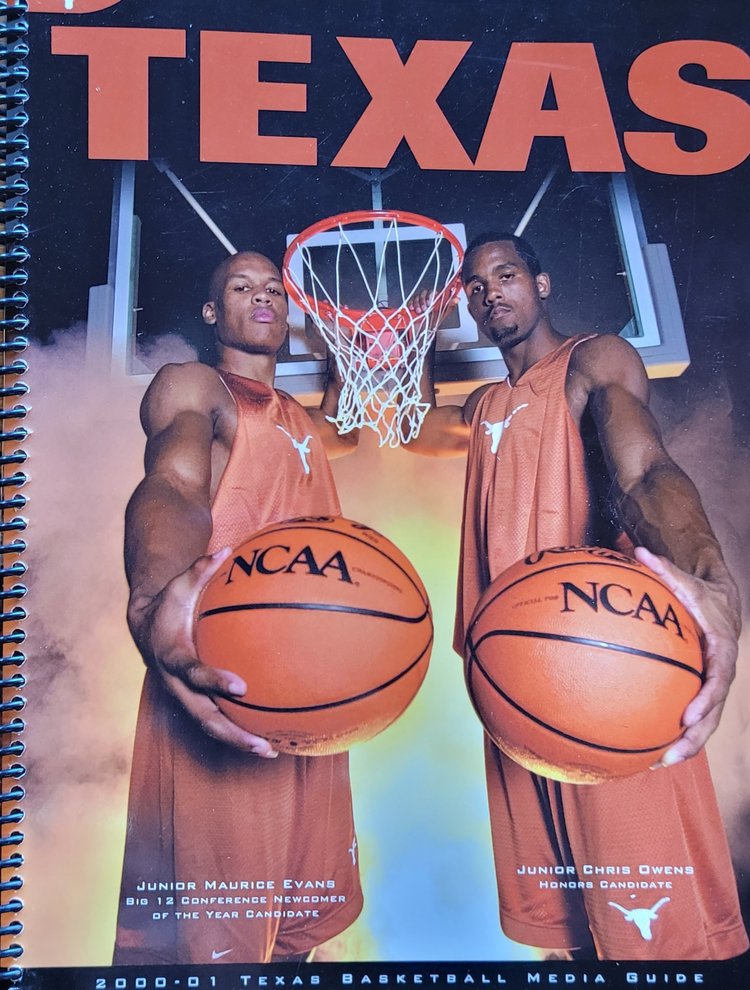
|
|
Maurice Evans is the Big 12 newcomer of the year, a Chris Owens John R. Wooden Award winner, and an All-American Team Candidate.
|
|
|
|
Danny Reilley in the Steeple Chase
|
|
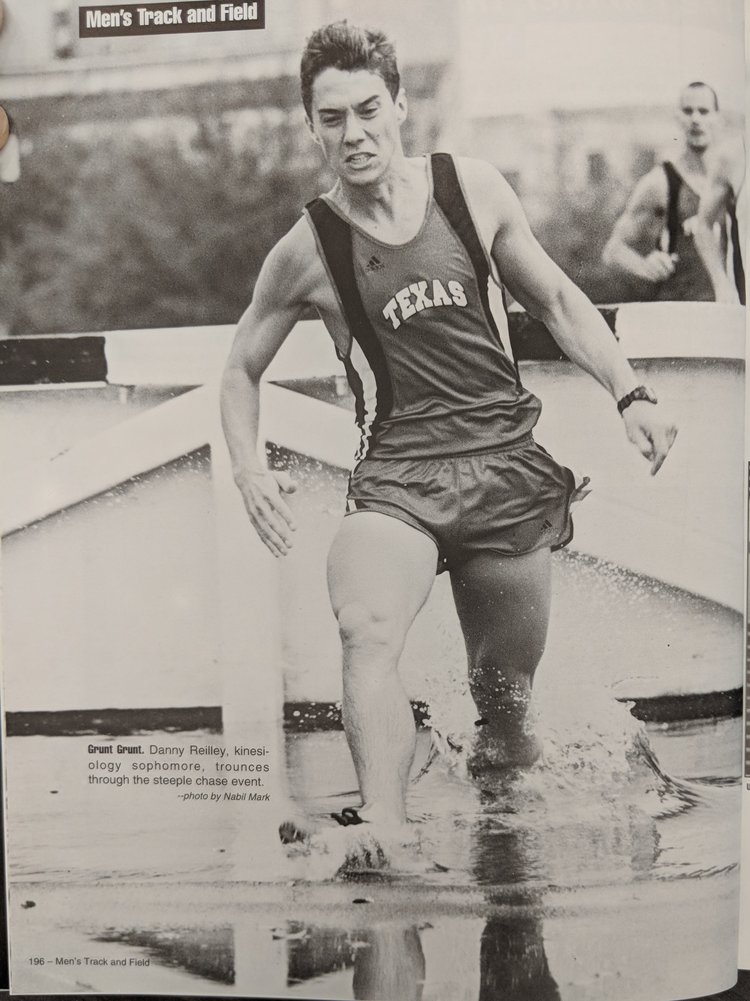
|
|
|
The history of building a safer football helmet starts with the actions of President Theodore Roosevelt
|
1905- People were shaken by the November death of Union College halfback Harold Moore, who died of a cerebral hemorrhage after being kicked in the head while trying to tackle a New York University player. A cartoon in the Cincinnati Commercial Tribune showed the Grim Reaper atop a goalpost.
THE FIX
By Katie Zezima
May 29, 2014 at 8:00 a.m. EDT
In 1905, President Theodore Roosevelt – an avowed football fan – summoned coaches and athletic advisers from Harvard University, Yale University, and Princeton University to the White House to discuss how to improve the game of football, “especially by reducing the element of brutality in play,” The Washington Post wrote in an Oct. 10, 1905 article.
The changes inspired in part by Roosevelt were the first steps in a long line of reforms to make football safer.
Football at the time was particularly dangerous and violent. In 1905 alone, at least 18 people died, and more than 150 were injured playing football. According to the Washington Post, at least 45 football players died from 1900 to October 1905, many from internal injuries, broken necks, concussions, or broken backs.
“Nearly every death was traced to ‘unnecessary roughness.’ Picked up unconscious from beneath a mass of other players, it was generally found that the victim had been kicked in the head or stomach to cause internal injuries or concussion of the brain, which, sooner or later, ended life,” The Post wrote on Oct. 15, 1905.
|
|
|
|
|
This 1896 photo is only an illusion of a helmet as a protective device. During this era, the players grew their hair longer and wrapped bandages around their heads and over the tops of their ears. This process pushed the hair up into a mop, adding sufficient cushioning to prevent severe injuries. Included was a mouth and nose protector. However, 1895 football player Walter Fisher and Hall of Honor inductee said about the mouth/nose protector, The communal rubber nose protector in place by a rubber band was not worth a darn. Those louts on the other team would get ahold of it, pull it back, and let go.
|
|
|
Hair was not adequate to absorb blows to the head, so the football helmet was invented. By the 1900s, the head harness helmet, which was flat at the top, was a revolutionary design that was not challenged for a decade.
By the mid-1910s, helmets were re-designed with a curved top to cradle the head. By the 1930s, a slow transition to a wire covered with a rubber face mask began. However, facemasks did not become prominent as an attachment to the helmet until the 1960s. In 1939, Riddell Company created the first plastic hard shell helmet.
|
|
|
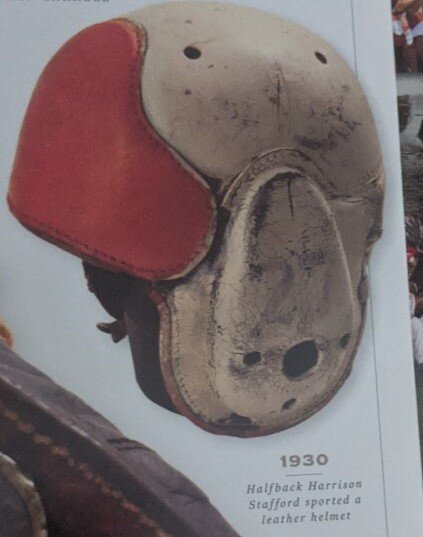
|
|
Longhorn star Harrison Stafford’s 1930 helmet
|
|
|
|
1957 Longhorn helmet with facemask
|
|
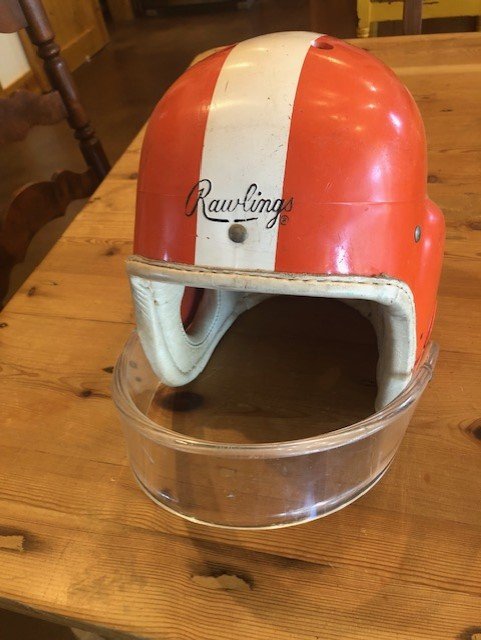
|
|
|
|
|
You’re invited to
The Legends Dinner
Honoring the 2024 Class of Inductees
Nate Dusing, Jean Henry, Vicki Loock Veris, & Jim Stillson
When: Friday, April 26th, 2024. Reception 5:00 pm Dinner and Induction: 6:30 pm
Where: Lee and Joe Jamail Texas Swimming Center (social hour) & The San Jacinto Ballroom (Dinner and Induction)
Cost: $75/person (Additional donations are always appreciated.)
Or contact
|
|
|
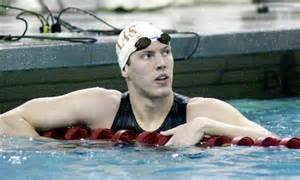
|
Dusing represented the United States at two consecutive Summer Olympics. At the 2000 Summer Olympics in Sydney, Australia, he earned a silver medal by swimming for the second-place U.S. team in the preliminary heats of the men’s 4×200-meter freestyle relay.
|
|
|
|
|
|

|
Nate Dusing was one of the University of Texas’s most versatile and outstanding swimmers. Nate was a member of two NCAA Championship teams (2000, 2001), an individual NCAA Champion in the 200 IM and 200 Back (2001), and a member of nine NCAA Championship relay teams while at Texas.
|
|
|
|
|
Welcome to TLSN, the Longhorn sports historical website that is both educational and compassionate. As a non-profit organization, we take pride in our mission to provide high-quality content that is free for everyone to access. Our website and newsletter offer insightful and historical perspectives on Longhorn sports from the people who created it Join us in celebrating the rich history of Longhorn sports by visiting our website today.
Find us at: Https://texaslsn.org
|
|
|
